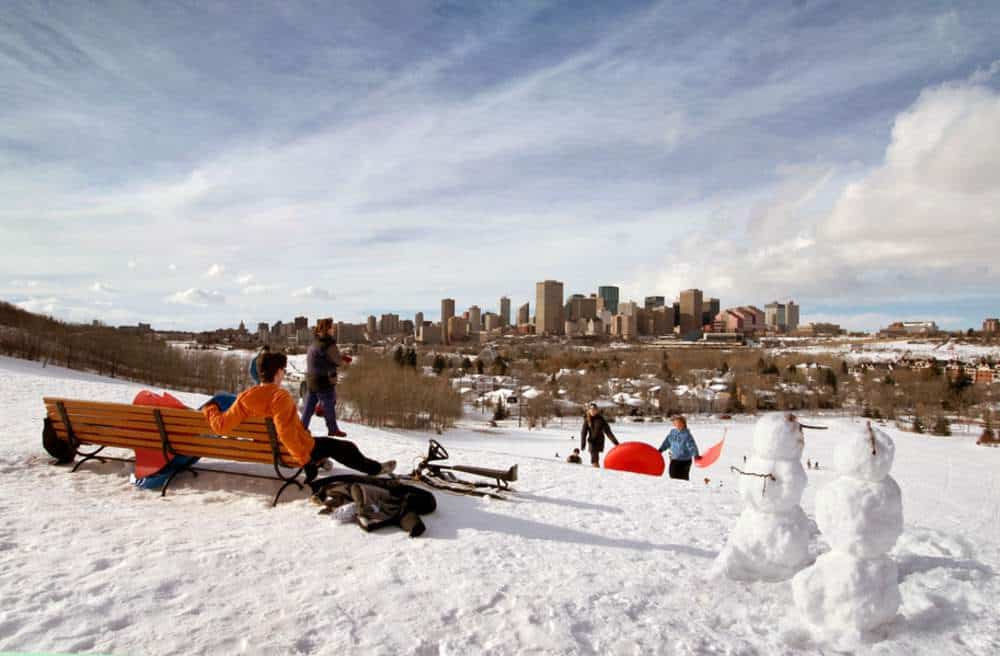Winter is not the typical season for hiking. Winter is cold, snowy, and icy, and it may be dangerous to hit the mountainside – it’s much better to wrap yourself in a blanket with a cup of hot chocolate in your hand, binging on Netflix or exploring the massive game library of the JackpotCity online casino. Playing games while curled up in an armchair, preferably in front of a fireplace, is a great way to spend your winter, especially if there’s a trace of chionophobia in you (a fear of snow). The games over at JackpotCity will give you hours upon hours of quick and easy entertainment while you wait for the snowy weather to give way to a sunny, lukewarm spring.
Winter doesn’t mean you can’t go on a hike, though. Actually, there are many who are charmed by the silence and calm of nature in the winter, the frozen landscapes, the endless white of the snow. But the freezing cold and the snow, beautiful as they may be, are dangerous companions. Hiking in the winter needs more thorough preparations than any summer trip.
Weather
Be sure to check the weather forecast before leaving on a hike in the winter. If there’s even a chance for the weather to turn bad – think storms or heavy snowfall – it’s wiser to postpone your trip. While away, make sure to check the weather often and if there’s a chance for it to turn dangerous, make sure to head home (or for shelter) in due time.
Gear
When hiking in the winter, your motto should be “hope for the best, prepare for the worst”. Your backpack shouldn’t lack things that you may need in an emergency, ranging from a well-stocked first-aid kit, water, energy-dense snacks, a spare layer of dry clothes (socks, gloves, sweater – make sure to keep them dry), lighter, some rope, a knife, and other necessities.
Make sure to pack lip balm, sunscreen, and don’t forget your sunglasses – hiking in the snow on a sunny day can easily lead to snow blindness (photokeratitis), a condition similar to a sunburn suffered by the eyes.
Before you leave, make sure to check if the area you’re header to is prone to avalanches and ask advice before heading out.
Heat
While it may sound a contradiction to dress lightly for your winter hike, that’s exactly what you’ll want to do. While you hike, your body generates a lot of heat – you want to make sure to dress lightly enough for you not to sweat because that will definitely make you feel cold.
The right layering is important when you head out for a winter hike. Experts recommend to put on a warm, form-fitting base layer, preferably made of a material that effectively drives moisture away from your skin but still keeps you warm (cotton is surprisingly bad at this, so avoid it), followed by an insulating layer (preferably a fleece or down jacket), a sheltering layer that keeps wind and wetness away from you. Besides, you should always carry an extra layer for unexpected situations like a sudden change in the weather or an unexpected night spent outside.
If you start feeling warm, take a layer off – and when you start feeling cold, put it back on to prevent both overheating and hypothermia.
Food
A piece of advice experienced winter hikers can’t stop sharing is eat. Hiking in the winter, especially breaking way, burns a lot of calories – aside from the energy expenditure of walking and carrying equipment, your body uses a lot of energy for keeping warm. Bring extra custom backpacks to fit your carrying needs.
But stopping for a leisurely lunch is not the best idea when on a winter hike. Instead, take short breaks and keep snacking while you walk. It will help you avoid fatigue for longer and also keep you warm.
And make sure to drink plenty of water – dehydration is a possibility even when you hike in the winter. But don’t eat snow – it will be bad for you.
Take extra care of your feet
Choosing the right footwear for your winter hike is vital – if you love your toes, that is. Aside from being sturdy, they need to have the right insulation to keep your feet from freezing. Serious hiking boots have a temperature rating, others, indicators of how much insulation is inside them – the more, the better.
Different terrain types require different accessories – crampons, microspikes or snowshoes. Make sure to have them at hand and that their staples are compatible with your hiking boots.
